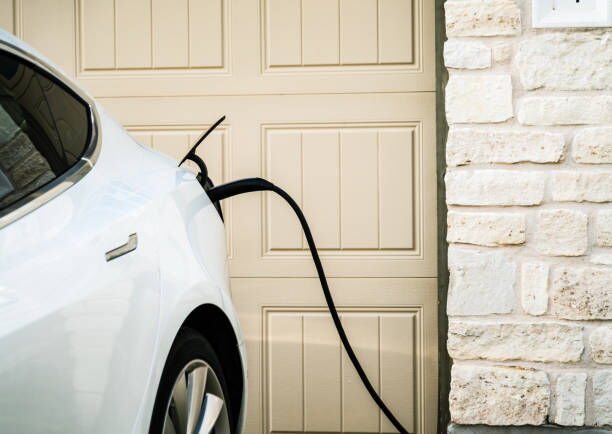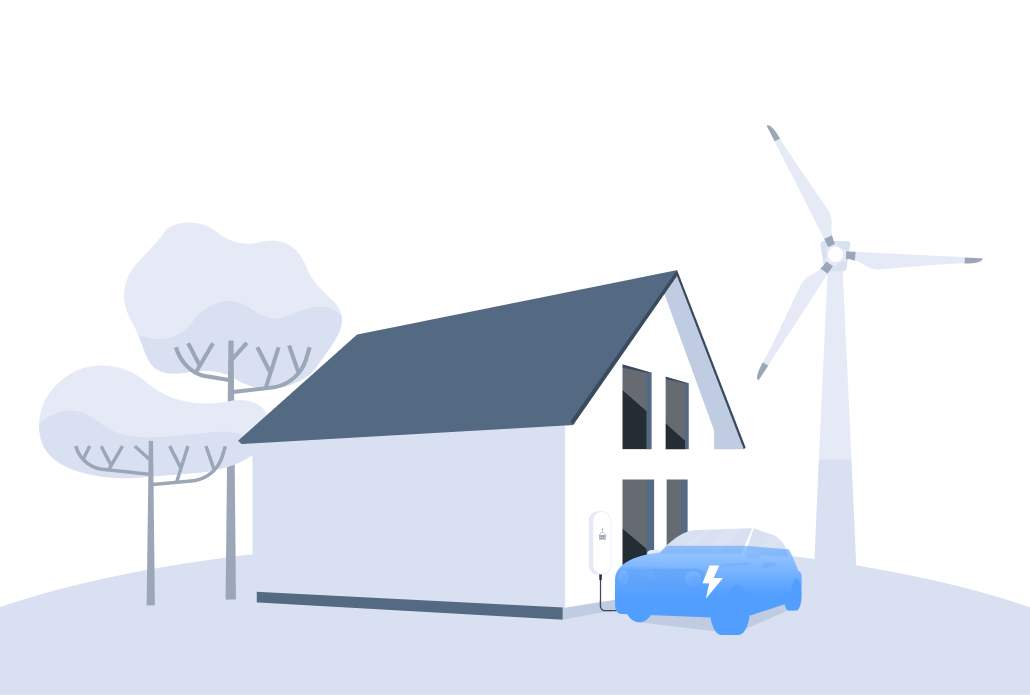In an era where sustainability and energy efficiency are becoming increasingly critical, innovative technologies are emerging to reshape how we consume and manage energy. One such groundbreaking development is Vehicle-to-Home (V2H) technology, a system that leverages the power of electric vehicles (EVs) to provide backup energy for homes and businesses. This technology not only enhances energy resilience but also offers significant cost savings and environmental benefits. As the world transitions toward renewable energy and smarter grids, V2H is poised to play a pivotal role in the future of energy management.

Vehicle-to-Home (V2H) is a cutting-edge technology that enables the transfer of energy stored in an electric vehicle's battery to power a home or small business. This is achieved through smart EV charging systems and bidirectional (two-way) charging capabilities. Unlike traditional charging, which only allows energy to flow from the grid to the vehicle, bidirectional charging enables energy to move in both directions—from the grid to the vehicle and from the vehicle back to the home or grid.
When an EV is parked and connected to a V2H-enabled charger, the energy stored in its battery can be used to power household appliances, lighting, and other electrical systems. On average, a fully charged EV battery holds approximately 60 kilowatt-hours (kWh) of electricity, which is enough to power a typical home for up to two days. This makes V2H an invaluable resource during power outages, effectively turning an EV into a mobile backup generator.
V2H is also known as Vehicle-to-Building (V2B) when applied to commercial or multi-unit residential buildings. This technology is particularly beneficial in regions where utilities offer variable pricing for electricity. Homeowners can use V2H to reduce their energy bills by drawing power from their EV battery during peak demand periods when grid electricity is most expensive. Additionally, V2H can be integrated with renewable energy sources like solar panels, creating a more sustainable and self-sufficient energy ecosystem

The core of V2H technology lies in its bidirectional charging capability. Traditional EV chargers are unidirectional, meaning they only allow electricity to flow from the grid to the vehicle. In contrast, bidirectional chargers facilitate a two-way flow of energy, enabling the EV battery to discharge power back into the home or grid.
Here’s a step-by-step breakdown of how V2H works:
The EV is charged using electricity from the grid or a renewable energy source like solar panels. This typically occurs during off-peak hours when electricity rates are lower.
The charged EV battery stores the energy until it is needed. Modern EVs have large battery capacities, often ranging from 40 kWh to 100 kWh, making them ideal for energy storage.
When the home requires additional power—either during a grid outage or during peak demand periods—the bidirectional charger allows the EV battery to discharge energy back into the home’s electrical system.
V2H systems are often integrated with smart home energy management systems. These systems optimize energy usage by automatically switching between grid power and EV battery power based on real-time electricity prices and household demand.
Once the EV battery has been discharged, it can be recharged during off-peak hours or using surplus energy from renewable sources, ensuring that the vehicle is ready for its next use.
The adoption of V2H technology offers a wide range of benefits for homeowners, businesses, and the environment. Here are some of the most significant advantages:
One of the most compelling benefits of V2H is its ability to provide backup power during grid outages. In areas prone to extreme weather events or unreliable grid infrastructure, V2H can ensure that critical appliances like refrigerators, medical equipment, and heating systems remain operational. This eliminates the need for traditional backup generators, which are often expensive, noisy, and reliant on fossil fuels.
V2H can significantly reduce energy costs, especially for homeowners on variable-rate electricity plans. By charging the EV battery during off-peak hours when electricity rates are low and using that stored energy during peak hours when rates are high, households can avoid costly peak-demand charges. Over time, these savings can offset the initial investment in V2H technology.
V2H contributes to a greener energy ecosystem by promoting the use of renewable energy sources. When paired with solar panels, V2H allows homeowners to store excess solar energy in their EV battery and use it later, reducing reliance on grid electricity generated from fossil fuels. This not only lowers carbon emissions but also maximizes the efficiency of renewable energy systems.
For homeowners considering energy storage solutions like home batteries, V2H offers a cost-effective alternative. Instead of investing in a separate battery system, the EV itself serves as a storage device, providing the same benefits at a fraction of the cost.
On a larger scale, widespread adoption of V2H technology can enhance grid stability by reducing peak demand. By drawing power from EV batteries during high-demand periods, utilities can avoid overloading the grid and prevent blackouts. This also reduces the need for expensive grid infrastructure upgrades.
V2H technology increases the utility of EVs beyond transportation. By serving as a mobile energy storage unit, EVs become a more versatile and valuable asset for homeowners, further incentivizing the transition to electric mobility.
While V2H technology offers numerous benefits, there are several challenges and considerations that need to be addressed for its widespread adoption:
The upfront cost of V2H systems, including bidirectional chargers and compatible EVs, can be prohibitive for some homeowners. However, as the technology matures and economies of scale are achieved, these costs are expected to decrease.
Frequent charging and discharging of the EV battery can accelerate its degradation over time. Manufacturers are working on developing more durable batteries and optimizing V2H systems to minimize this impact.
The implementation of V2H technology requires supportive regulatory frameworks and infrastructure upgrades. Utilities and policymakers need to establish standards and incentives to encourage the adoption of bidirectional charging systems.
Not all EVs and home energy systems are compatible with V2H technology. Homeowners must ensure that their EV and charging equipment support bidirectional charging before investing in a V2H system.
Effectively managing energy flow between the EV, home, and grid requires sophisticated software and hardware. Homeowners may need to invest in advanced energy management systems to fully realize the benefits of V2H.
As the global transition to renewable energy and electric mobility accelerates, V2H technology is expected to play an increasingly important role in the energy landscape. Several trends are likely to drive its adoption in the coming years:
Improvements in battery capacity, durability, and cost-effectiveness will make V2H systems more accessible and efficient.
The development of smart grids, which use digital technology to optimize energy distribution, will enhance the functionality of V2H systems. Smart grids can communicate with V2H-enabled EVs to balance supply and demand in real time.
Governments around the world are introducing incentives to promote the adoption of EVs and renewable energy systems. Similar policies could be implemented to support V2H technology, making it more affordable for consumers.
As more homeowners become aware of the benefits of V2H, demand for compatible EVs and charging systems is likely to grow. Educational campaigns and demonstrations can help accelerate this trend.
Partnerships between EV manufacturers and utility companies will be crucial for developing standardized V2H solutions and integrating them into existing energy infrastructure.
Vehicle-to-Home (V2H) technology represents a significant leap forward in energy management, offering homeowners a reliable, cost-effective, and sustainable way to power their homes. By transforming electric vehicles into mobile energy storage units, V2H not only enhances energy resilience but also supports the transition to a cleaner, more efficient energy system. While challenges remain, the potential benefits of V2H are too significant to ignore. As technology continues to evolve and adoption grows, V2H is set to become a cornerstone of the smart, renewable energy future.